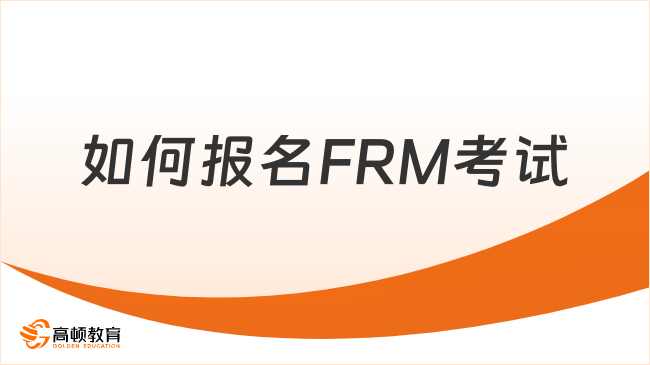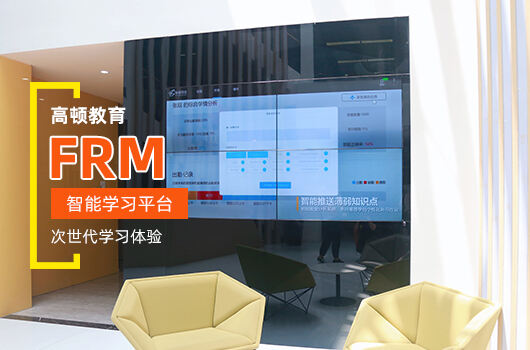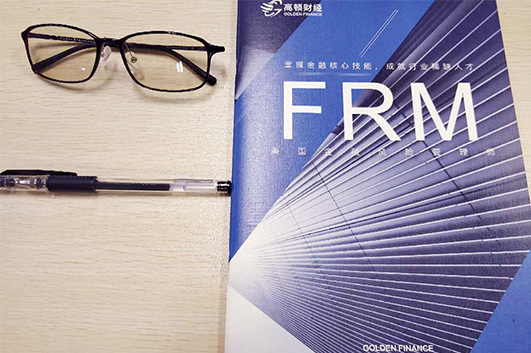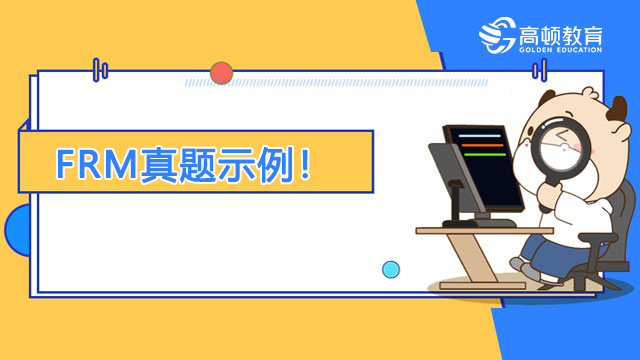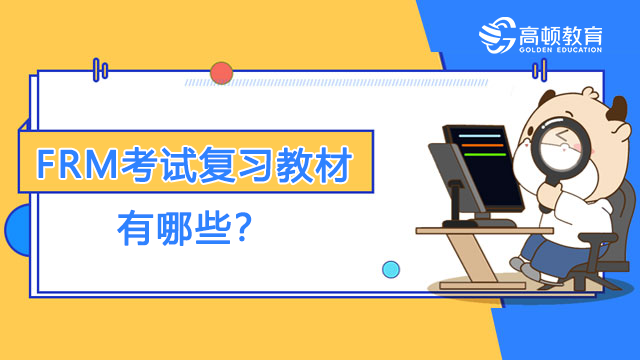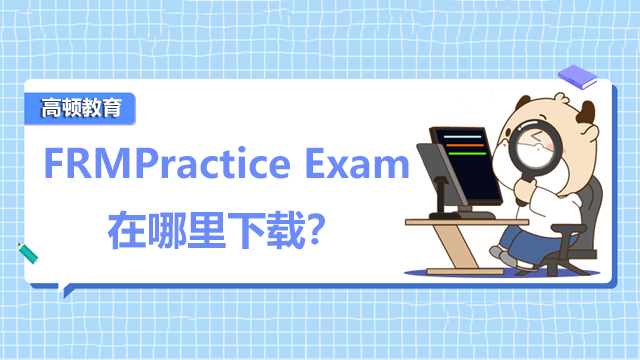一级风险管理创造价值
来源:
高顿网校
2014-11-05
Creating Value with Risk Management
1 Basic Viewpoint
Hedging Irrelevance Proposition says that, in a perfect market, the firm cannot create value by hedging a risk when the price of bearing that risk within the firm is the same as the price of bearing it outside of the firm. However, financial markets are not likely to be perfect markets in practice which suggests that firm managers likely have many opportunities to create value for shareholders using financial risk management.
2 Creating Value in Different Ways
2.1 Handling Bankruptcy Costs and Financial Distress Costs
When a firm has risky debt in its capital structure, there is some probability that the firm’s operating income will be insufficient to pay the debt holders. In this case the firm may file for bankruptcy. In the real world, it is costly for firms to file for bankruptcy. Firms have to hire lawyers, incur court costs, and need to pay for all sorts of financial advice. Costs incurred as a result of a bankruptcy filing are called bankruptcy costs. The present value of future bankruptcy costs reduces the value of a firm. However, hedging can reduce cash flow volatility so that the present value of bankruptcy costs decreases because bankruptcy becomes less likely.
Moreover, even if bankruptcy is avoided, a firm in financial trouble may experience added costs from debt renegotiation, forgone value-creating projects, etc. The costs firm incur because of a poor financial situation are called costs of financial distress. Costs of financial distress can occur even if the firm never files for the bankruptcy or never defaults. The analysis of the benefits of risk management in reducing bankruptcy costs holds for all costs of financial distress also. Therefore, hedging can increase firm value if it helps avoid a large cost of financial distress.
In addition, the risk of bankruptcy and financial distress intuitionally cannot be hedged by the shareholders, thus, it may be value increasing for the firm to undertake risk management to reduce or eliminate these costs.
2.2 Moving Income Across Time and by Reducing Taxes
Assuming no carry-over provisions, the income tax in a very good year is high and is not offset by a tax refund in a year with losses. If we can rearrange the risks we take so that we have less income when the tax rate is high and more income when the tax rate is low, the present value of taxes paid is reduced. Therefore, by stabilizing earnings, corporations reduce the average tax payment over time, which should increase their value.
2.3 Reducing Diversifiable Risk of Large Shareholders
Generally, for investors who have a large position in a firm, unsystematic risks do not balance out. As a result, they might want the firm to reduce risk as homemade hedging may not be possible for this large investor. If the firm gains from having the large shareholder, then it can make sense to hedge to make it possible for the large shareholder to keep her investment in the firm.
There are two reasons why shareholder monitoring can increase firm value.
First, an investor might become a large shareholder because he has some ability in evaluating the actions of management in a particular firm. Such an investor has knowledge and skills that are valuable to the firm which helps the firm’s manager increase the value.
Second, managers do not necessarily maximize firm value but rather maximize their welfare like all economic agents. Therefore, monitoring can make it more likely that managers maximize firm value. In practice, investors hire managers to serve as their agents and give them discretion to run the company. However, good and bad managers are not always easy to identify. Without hedging, earnings fluctuate due to outside forces. This makes it difficult to identify the performance of management. With hedging, there is less room for excuses. Bad managers can be identified more easily and fired, which should increase firm value. In addition, shareholders can ensure that managers are motivated to maximize the value of the company’s shares through a managerial compensation contract that gives managers a stake in how well the firm does. If managers earn more when the firm does better, this induces them to work harder.
2.4 Reducing Probability of Debt Overhang
Consider a firm that has experienced poor operating results to the point where there is significant probability that there will not be enough firm value to satisfy the debt obligations and to where the equity is worthless. One implication of this situation is that managers may accept high-risk projects that will decrease expected firm value but will also increase the probability of positive equity value at the end of the period. Another implication is that management may also negatively impact firm value by not accepting positive net present value projects. The reason may probably lie in the fact that financing a profitable project by issuing new equity will increase firm value, but most of the increase in value will accrue to the debt holders. In conclusion, firms are said to have decreased value due to debt overhang. In another word, risk management that reduces the probability of getting into a situation of debt overhang can increase firm value.
2.5 Reducing Information Asymmetries
When one party to a deal knows more than the other, we call this an information asymmetry. The costs associated with management’s opportunity to undertake projects that have a negative net present value when it is advantageous from them to do so are called agency costs of managerial discretion which make it harder for a firm to raise funds and increase the cost of funds. However, risk management can help to increase the confidence of outside investors that firm results reflect management quality, reducing funding costs and increasing firm value.
3 Example
3.1 FRM EXAM 2009-QUESTION 1-2
By reducing the risk of financial distress and bankruptcy, a firm’s use of derivatives contracts to hedge its cash flow uncertainty will
a. Lower its value due to the transaction costs of derivatives trading
b. Enhance its value since investors cannot hedge such risks by themselves
c. Have no impact on its value as investors can costlessly diversify this risk
d. Have no impact as only systematic risks can be hedged with derivatives
Answer: b
The cost of financial distress is a market imperfection, or deadweight cost. By hedging, firms will lower this cost, which should increase the economic value of the firm.
3.2 FRM EXAM 2009-QUESTION 1-8
In perfect markets, risk management expenditures aimed at reducing a firm’s diversifiable risk serve to
a. Make the firm more attractive to shareholders as long as costs of risk management are reasonable
b. Increase the firm’s value by lowering its cost of equity
c. Decrease the firm’s value whenever the costs of such risk management are positive
d. Has no impact on firm value
Answer: c
In perfect markets, risk management actions that lower the firm’s diversifiable risk should not affect its cost of capital, and hence will not increase value. Further, if these activities are costly, the firm value should decrease.
Reference:
1) Handbook, P20-22
2) Schweser Study Notes, Part I, Book 1, P94-98
3) Rene Stulz, Risk Management & Derivatives, Chapter3 P1-54
4) http://en.wikipedia.org/wiki/Financial_risk_management

扫一扫微信,*9时间获取2014年FRM考试报名时间和考试时间提醒
高顿网校特别提醒:已经报名2014年FRM考试的考生可按照复习计划有效进行!另外,高顿网校2014年FRM考试辅导高清课程已经开通,通过针对性地讲解、训练、答疑、模考,对学习过程进行全程跟踪、分析、指导,可以帮助考生全面提升备考效果。
报考指南:2014年FRM考试报考指南
免费题库:2014年FRM考试免费题库
考试辅导:FRM考试招生专题
高清网课:FRM考试网络课程
报考指南:2014年FRM考试报考指南
免费题库:2014年FRM考试免费题库
考试辅导:FRM考试招生专题
高清网课:FRM考试网络课程
版权声明:本条内容自发布之日起,有效期为一个月。凡本网站注明“来源高顿教育”或“来源高顿网校”或“来源高顿”的所有作品,均为本网站合法拥有版权的作品,未经本网站授权,任何媒体、网站、个人不得转载、链接、转帖或以其他方式使用。
经本网站合法授权的,应在授权范围内使用,且使用时必须注明“来源高顿教育”或“来源高顿网校”或“来源高顿”,并不得对作品中出现的“高顿”字样进行删减、替换等。违反上述声明者,本网站将依法追究其法律责任。
本网站的部分资料转载自互联网,均尽力标明作者和出处。本网站转载的目的在于传递更多信息,并不意味着赞同其观点或证实其描述,本网站不对其真实性负责。
如您认为本网站刊载作品涉及版权等问题,请与本网站联系(邮箱fawu@gaodun.com,电话:021-31587497),本网站核实确认后会尽快予以处理。
点一下领资料
FRM二级(综合)精选习题
真题高频考点,刷题全靠这份资料
下载合集
FRM最新知识图谱框架图
梳理核心考点,一图看懂全部章节
下载合集
金融英语专业词汇(含解释)
全科英语词汇汇总,备考按照计划走
下载合集
FRM备考 热门问题解答
- frm学出来可以做什么工作?
-
各大银行是金融管理专业的一个就业方向,frm金融管理专业学生主要学习货币银行学、国际金融等方面的相关知识,适合在各大银行从事相关工作,这个方向的就业前景也非常可观,工作稳定,福利也很好。
- frm一共考几门?
-
FRM考试共两级,FRM一级四门科目,FRM二级六门科目。
- FRM金融风险管理师报名条件
-
There are no educational or professional prerequisites needed toregister.可以理解为,报名FRM考试没有任何的学历和专业的要求,只要是你想考,都可以报名的。
- frm考试形式
-
FRM考试为全英文考试,FRM一二考试均为机考。frm一级考试题型:一级100道选择题,frm二级考试题型:二级80道选择题。
严选名师 全流程服务
其他人还搜了
热门推荐
-
哪里能找到FRM考试内容真题?一文告诉你! 2023-09-04
-
frm题目有什么?如何准备考试? 2023-09-01
-
FRM历年真题解析!11月考生必看! 2023-08-31
-
2024年FRM考试内容分享!如何报名FRM考试? 2023-08-29
-
11月FRM考试题型有哪些?只有选择题吗? 2023-08-29
-
为什么FRM考前需要刷题?有哪些题库推荐? 2023-05-04
-
2024年FRM考试有什么变化?计算题会增多吗? 2023-04-11
-
FRM考试是单选题吗?备考FRM如何刷题? 2023-03-17
-
5月FRM备考该如何刷题?该刷哪些题? 2023-03-10
-
frm二级考试科目题型有什么?备考frm二级用到哪些教材? 2023-03-03
-
FRM考试只有选择题吗?为什么没有写作题? 2023-02-09
-
2023年FRM考试押题哪里有,这些考题必须做! 2023-02-08
-
frm考试题目类型是什么?考试难度大吗? 2023-02-03
-
FRM备考注意事项!哪些题目值得刷? 2023-01-24
-
FRM考试有几种题目类型?考试时要注意什么? 2023-01-09
-
FRM考试有几种题目类型?考试时要注意什么? 2023-01-09
-
FRM考试有多少道题?FRM练习题有哪些? 2022-12-08
-
2023年FRM考试题型有哪些?FRM考前有必要刷题吗? 2022-11-29
-
FRM真题示例!FRM习题值得做吗? 2022-11-10
-
FRM考试题型有哪些?都是选择题吗? 2022-11-07
-
FRM考试计算题难度大吗?要如何练习FRM计算题? 2022-10-24
-
FRM考试复习教材有哪些?FRM考试题型有哪些? 2022-10-19
-
FRMPractice Exam在哪里下载?考前刷题有哪些好处? 2022-10-18
-
frm试卷是什么题型?怎么参加FRM考试? 2022-10-08
-
frm一级题型有什么?如何准备一级考试? 2022-10-08
-
frm一级真题怎么找?一级需要多久备考? 2022-09-29
-
frm题型有什么?如何备考该考试? 2022-09-29
-
frm题库在哪里找?怎么提高做题速度? 2022-09-27
-
frm一级题型有什么?需要报班学习吗? 2022-09-27
-
frm都是选择题吗?考试怎么准备? 2022-09-27
 更多服务
更多服务









